Get The Latest
Sign up for the Hudson Music email list for the latest info on new releases, sales and exclusive offers.
Sign up for the Hudson Music email list for the latest info on new releases, sales and exclusive offers.
Click Here to download the pdf booklet that was originally included with the Anatomy of a Drum Solo DVD. (pdf download)
The drumming world, and musical world as a whole, lost a giant when Neil Peart passed away on Tuesday, January 7th, 2020.
Hudson Music shared a long history with Neil, collaborating on two educational DVD/Video projects, Anatomy of a Drum Solo, and Taking Center Stage, as well as the career retrospective book, also titled Taking Center Stage. Prior to these project, Rob Wallis and Paul Siegel collaborated with Neil on the Warner Bros release, A Work in Progress.
Below is a collection of tributes, memories, photos and video from our time with Neil, as well as some memories from fellow drummers.
We hope you enjoy this tribute to our friend, Neil Peart.
Integrity. That is what I would say if asked to describe Neil in a word. Luckily, during our 30-year professional and personal relationship, I was able to see how that quality ran like a steel rod through every aspect of his too-short life.
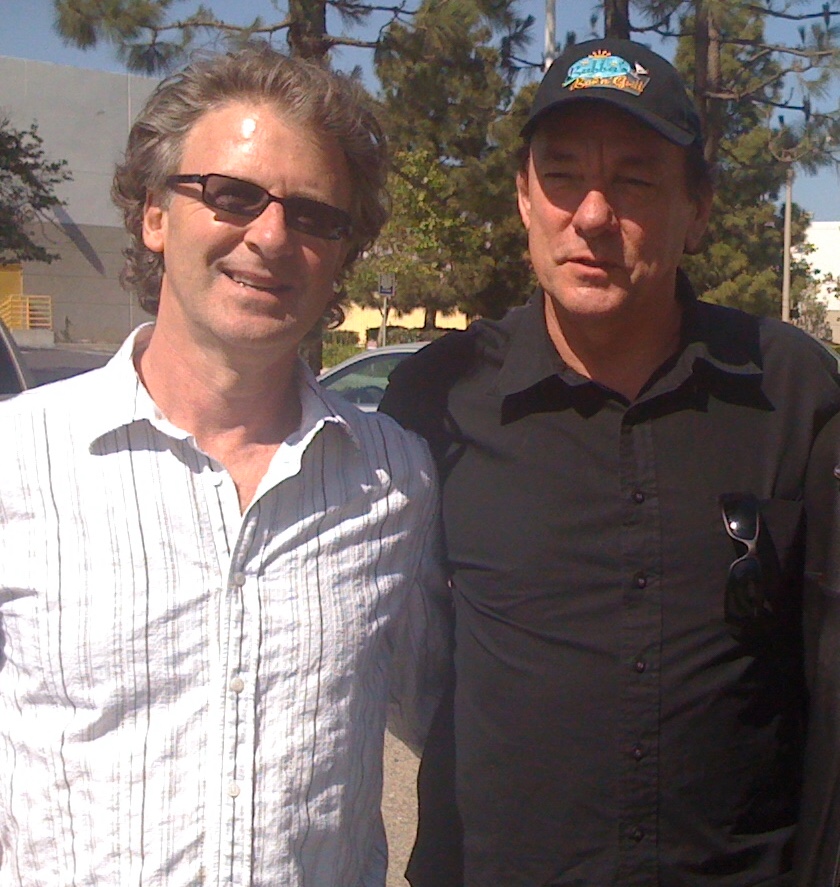
Our relationship started, like many others, with writing a letter — yes, putting a communication in the mail. In the mid-80’s, my then-business partner Paul Siegel and I began taking turns writing to Neil several times a year, asking if he’d like to do an educational video. We would always get back a polite response telling us it was not the right time, but to “not give up hope.” During that time, we began a relationship with a senior Rush management person, Pegi Cecconi, whose initial role, we came to see, was probably to “feel us out.” We would occasionally meet Pegi for lunch or dinner when she was in NYC for Rush label business. And so it went for several years (probably many more than I remember).
While we were reaching out to Neil, Cathy Rich was also writing to him, asking if he’d perform at one of her Scholarship Concert/Tributes to her father, Buddy Rich. And after one of her many letters, he eventually said yes. He had decided that he wanted to try performing with a big band, playing the music of Buddy Rich. This took place on April 8th, 1991, at the Ritz in NYC (the old Studio 54, which became a concert hall). As word got out that Neil would be performing outside of Rush in a small venue, the excitement from the drumming community around the world was near fever pitch.
Cathy brought us on to record the event. Our company at the time, DCI Music Video, hired the Record Plant New York mobile audio recording truck (the first time of many), run by the great Dave Hewitt. The engineer at the board was Sean McClintock, who became our go-to guy and engineered many DCI and Hudson Music sessions. We also put together a top-notch video team. As we ran through video and sound checks that afternoon, I remember hearing that a line of people had formed down 8th Avenue and stretched for several blocks – almost all of them there expressly to see Neil. Many appreciated Neil’s effort to play music outside his comfort zone. The show, which also featured drummers Steve Smith, Marvin “Smitty” Smith, Omar Hakim and others, was fantastic. And it was that event that established our relationship with Neil.
In 1994, Neil asked Paul and me to film the recording of a record he was producing for Atlantic Records titled Burning for Buddy. As we found out, Neil meant it literally when he asked us to film it. He didn’t want a “crew” in the studio, just Paul and me to run cameras as the sole presence on the video side. We had never done this but, of course, said yes. We bought two small hi-8 video cameras, tripods and some lighting kits, and reported for duty at New York’s Power Station Studios every day for 14 straight days/12 hours a day. Each day brought two drummers in, including Steve Gadd, Bill Bruford, Max Roach, Kenny Aronoff, Dave Weckl, David Garibaldi, Ed Shaugnessy and Simon Phillips to name a few. The project featured more than 20 of the biggest drum names in the world. What an experience….
One day, while I was on a business trip to the U.K., Paul called with the news we had been waiting for. Neil sent us a letter and said we “finally wore him down” and that the coming year would be a good time to start on his first educational project. We were overjoyed and thus began our “real” journey with Neil. It was a partnership that he described years later in one of his blog posts as second to his working with Geddy and Alex; needless to say, the first time I saw those words I nearly fell out of my seat.
Over the coming months, we began sending letters back and forth with content ideas and, as Neil later said, the three of us working together was a 1+1+1= 4. He was delighted with the direction things were going as we mapped out the video content. We agreed to film in early 1996 at a studio in upstate New York: Bearsville Studio in Woodstock, where The Band famously recorded the closing scene in The Last Waltz, among many other big records. Neil liked it because he could snowshoe to the studio each morning from his cabin on the property. We went to the studio ahead of Neil’s arrival in Woodstock, to set up his kit, plus cameras and lights. We expected that Neil might have a case of nerves and we knew he liked Macallan whiskey so, as studio manager Mark McKenna reminded me, we brought out a bottle when Neil arrived the night before the sessions. But the only glasses we could find in the studio were pint glasses for beer. Neil proceeded to pour four “shots” of the Macallan, emptying the entire bottle in the four pints.
Bill Miller reported on the session for a cover of Modern Drummer Magazine. Having Bill at the shoot was great, as he had established a relationship with Neil and helped to make Neil feel relaxed. And in fact, we all were. When Neil left the studio on his motorcycle (his red BMW) when we wrapped, it felt like we had just finished a family weekend retreat.
Once the filming was done, we spoke with Neil regularly, and he weighed in on just about every creative aspect of the project, including the editing and packaging (for which he brought in Rush album designer Hugh Symes). He insisted we add a booklet. And he pushed us to use the highest quality boxed set packaging. Of course, he was right. He was always right! I came to learn of Neil’s incredible intellect, incredible memory, his wide body of knowledge, his worldly experiences, his rock-solid honesty, work ethic, dedication to quality, personal loyalty, and kindness. And, of course, there was the i-word: integrity.
The resulting video, Neil Peart: A Work in Progress, went on to become the top-selling educational drum video of all time.
As time went on, we began talking to Neil about the next project and in 2004 we agreed to a new concept and the DVD that would eventually be called Anatomy of A Drum Solo that was released in December 2005. We used Neil’s solo (titled “Der Trommler”) as the focus of a discussion about technique and soloing. The solo was recorded and filmed at a Rush Show in Hamburg, Germany, in 2004. We used a beautiful studio outside Woodstock, New York, called Allaire, that was a compound on top of a mountain. Neil liked the studio so much, Rush went there to record their studio album, Snakes & Arrows, in 2006.
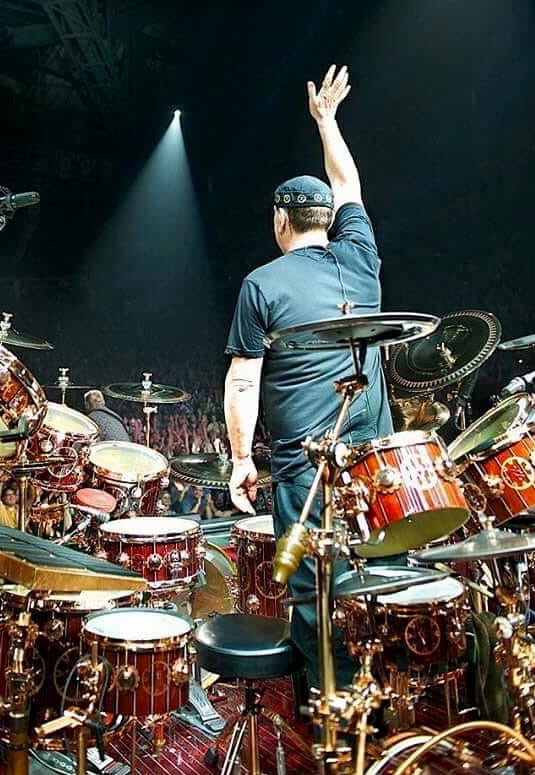 The Anatomy DVD took advantage of the DVD format and included camera-switching options, alternate edits, bonus audio tracks written by Neil (“Momo’s Dance Party” and “Pieces of Eight”), live Rush performances of Neil’s drum-cams on his monster kit, and interviews with Paul Northfield, Rush co-producer and engineer, and Lorne Wheaton, Neil’s long time drum tech. There was also an optional commentary track by Neil during his solos, and the final product ran almost four hours long.
The Anatomy DVD took advantage of the DVD format and included camera-switching options, alternate edits, bonus audio tracks written by Neil (“Momo’s Dance Party” and “Pieces of Eight”), live Rush performances of Neil’s drum-cams on his monster kit, and interviews with Paul Northfield, Rush co-producer and engineer, and Lorne Wheaton, Neil’s long time drum tech. There was also an optional commentary track by Neil during his solos, and the final product ran almost four hours long.
Our next project was Taking Center Stage: A Lifetime of Live Performance. In 2009 we started talking about “the next one” and promised Neil it would be interesting to him, meaning he would enjoy the location and the new team, which now included Hudson Senior Editor Joe Bergamini. (See Joe’s words about Neil, below). Once we agreed on the main concepts for the project, we did the performance elements in May 2010 at the Drum Channel studio, as Don Lombardi graciously allowed us access to the entire DC and DW facility. Neil gave a behind-the-scenes look at the upcoming Rush 2010-11 Time Machine Tour. Beginning with a visit to his personal pre-tour rehearsals, Neil showed how he was preparing for the upcoming tour, producing more than six hours of content.
In July 2010 we filmed backstage at a Rush concert in Saratoga, New York, and did a time lapse of the setting up of the drumset. We also filmed the sound check, and an amazing backstage interview where Neil explained and ran through his warm-up routine. Neil went thru every song in the Time Machine set list (which included the entire Moving Pictures album). We included slow motion demonstrations, another interview with drum tech Lorne Wheaton (Gump). We needed to now record all of Neil’s spoken parts — the explanations and commentary — and we agreed to film in various locations in Death Valley, California. We were able to do it just before the NAMM Show in January 2011. We met Neil in a small inn in the Death Valley National Park. It was an incredible couple of days that included filming in the lowest point in the northern hemisphere (warm, even in January) and at Dante’s Peak (where it began snowing at over 5,000 feet). We had to wrap the filming up there because Neil had driven his motorcycle and, as temperatures began dropping, the mountain roads started to freeze. I worried he would skid out and became anxious thinking about what we would tell the world if that happened!
Once we reviewed all of the material, we decided to produce a book under the same name: Taking Center Stage. It is a complete analysis of Neil’s drumming and is contains note-for-note drum transcriptions of 17 Rush songs that are included in the Taking Center Stage DVD. We also included a tremendous amount of color photos (I think it’s the first drum book to have color photos in it).
Click here to read an article by Neil about the making of Taking Center Stage (pdf).
Despite those great (and collaborative experiences), Neil meant so much more to me than just a creative partner. For close to 30 years, I have considered him a friend. Even so, I used to say he should change his middle name to “Private.” Neil cherished his privacy more than almost anything. The outpouring these past few days on social media has reaffirmed to me the vast amount of personal kindnesses that Neil quietly doled out: postcards of support, messages of comfort at great times of need or grief, letters of encouragement to friends, fans and folks he’d never met, visits to friends in hospitals. Nothing of the Rock Star life he could have easily slipped into. He used to tell me what a hard time he had saying “no” to people for just about anything, and in so doing taught me to only ask him for something when it was really important — and rarely, if ever, did he turn down a request from me for anything, either big or small.
We had a few crazy adventures together. Here is a link to a story Neil posted on his website blog to an extraordinary tale involving me – a story that took him 12 pages to explain, having to do with getting some very valuable items returned to him (through me) that had fallen off his motorcycle more than 10 years earlier. Click here to read Neil’s account of the story.
Then there was the time when Neil asked if he could have his car (a beautiful limited edition Z-8 BMW) delivered to my house outside New York City ahead of our Anatomy video shoot. I actually got to drive it because the delivery truck could not make it around a corner and into my driveway. His plan was for me to pick him up at the airport, drive to my house, pick up his car, and then both of us drive to the studio outside Woodstock. And after the shoot, Neil planned to drive to Canada and spend some time at his home there. I told my kids not to go anywhere near the car for the several days it sat in the driveway. I could only imagine explaining to Neil that a stray baseball broke a window or dented the hood. Then again, he probably would have laughed about it…..
There were also the visits to “Bubba’s Cave” in Santa Monica. I’d go to the NAMM show a day early and swing by Neil’s “office” to have lunch or dinner and see the latest additions to his car collection. These were always really special times, getting to share his home away from home. He loved talking about the details of each car. He’d also update me on his latest goings on and the latest adventures with his daughter, Olivia. A few years ago, he told me how the favorite part of his day was going to her school to read to her class, followed by a few hours of filing books in the school library. He was SO happy being a librarian. This was Neil Peart… doing it his way.
It is difficult to express the impact Neil has made on my life on so many levels. He taught me about so many things, and his passing will leave a huge hole for me – for all of us. It is still difficult to process. For now, all I can say is, “Thank you, Bubba. I’ll see you down the road….”
Rob Wallis
Owner, Hudson Music
Miss you already Neptune. Ginger, Mitch, and John have your chariot ready for the ride to Valhalla.
Stewart Copeland
The passing of Neil Peart hit me very hard. We were close in age and I was keenly aware of his life story, having spent time with the man. There was a particular dinner in Toronto that comes to mind, which occurred when Neil was still a Zildjian endorser. I had been part of a Zildjian weekend, teaching at a Toronto university with Louis Bellson and Steve Houghton. After the seminars were finished Neil joined us for dinner. Also sitting at the table was Steve Houghton, Louie Bellson, Armand Zildjian, Lenny DiMuzio and myself. I sat next Neil and his wife Jacqueline. They told me about their daughter Selena who was not a big rock fan, which we found amusing. She loved classical music and played the flute. Years later, in 1997, I learned of Selena’s untimely and tragic death; it was like a physical blow to me. I thought back to that evening and recalled the love and pride infused in their stories about Selena. I very much related to them as a fellow parent. When Jacqueline passed ten months later, I couldn’t imagine the devastation of such a profound tragedy. My heart went out to Neil. I respected the way he dealt with his losses with a long break from music and much introspection.
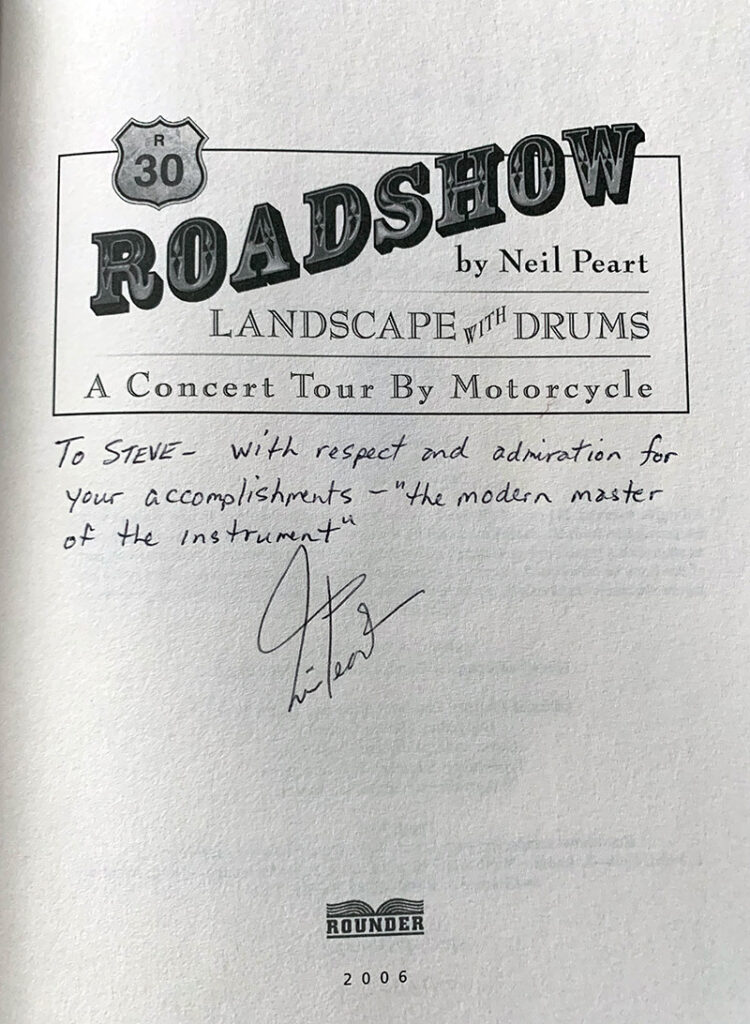
Neil and I met in 1985 during the recording session for bassist Jeff Berlin’s first solo album Champion. The album was produced by Ronnie Montrose and featured Scott Henderson on guitar, T Lavitz, Clare Fisher and Walter Afanasieff on keyboards, with Neal Schon sitting in on one song. Jeff had me play drums on most of the album and asked Neil to guest drum on two songs. We all knew for Neil to accept that offer was unusual and we were excited to have him perform on the record. When Neil arrived at the session, he was gracious to us all, a true gentleman and humble. He was also extremely prepared. Neil played on the title track, “Champion (of the world),” and as I recall, he played a perfect drum part in one take. He also played on the Cannonball Adderly tune, “Marabi.” Jeff had devised an incredible arrangement for this uptempo swinger. Neil played a grooving shuffle throughout. It was my job to come in on the rock bridges, and outro, with a double-bass Billy Cobham style shuffle, double-drumming with Neil. The song came out great and we all had a fantastic time. Everyone was impressed with Neil’s musicianship and creativity. After the session Neil broke out his bottle of scotch and we had a lovely time trading stories and laughing into the evening.
In 1993 Neil called me to play on Burning For Buddy, an album and video project that was a tribute to Buddy Rich. We had both played with the Buddy Rich Big Band a year earlier at a concert in New York City and it’s well documented how Neil decided to follow that up with a larger project based on Buddy Rich’s legacy. During the Burning For Buddy sessions Neil approached me and, very politely, asked me what I had done to improve my drumming so much since the 1985 Jeff Berlin recording. I replied, “I’ve been studying with Freddie Gruber,” who I considered my drum guru. Neil immediately wanted to meet Freddie, so I introduced them to each other and they hit it off famously. Neil took his lessons with Freddie very seriously and he and Freddie became fast friends.
I saw Rush live a number of times and was always blown away by the band, the music, the presentation and Neil’s creative and compositional drumming. When Neil retired from touring in 2015 every drum magazine in the world covered the story. I was moved to tears when I read in his interviews how drumming had taken such a toll on his body. I’m sure it had to have been difficult to make that decision – to walk away when he did. And now, I’ve learned of Neil’s passing. Again the tears come. He left us far too early with scarce time to enjoy his new family and his retirement. I knew Neil as a man of great humility, intelligence and humor. His drumming has inspired generations and I’m sure, will continue to inspire and inform drummers of the future. I am grateful to have known Neil Peart and he is already missed.
Love and respect,
Steve Smith
When Kenny Aronoff wanted a foreword for his 2016 memoir Sex, Drums, Rock ‘n’ Roll!: The Hardest Hitting Man in Show Business, he went right to his friend Neil Peart. “I wanted someone who understood me,” Aronoff recalls to Billboard. “We had met and he had similar tastes in all kinds of things so I felt he’d be best for the job.” The two had met when Peart asked Aronoff — whose voluminous credits include John Mellencamp, Chickenfoot, Smashing Pumpkins and, most recently, John Fogerty, Joe Satriani and Jerry Lee Lewis — to play on his two Burning for Buddy albums during the mid-’90s. They stayed in touch ever since, and in the wake of Peart’s death he recalls their friendship and Peart’s impact and influence.
With Neil, it didn’t surprise me, but in this crazy day and age of Headline News and all kinds of world drama, Neil passing really affected drummers and the music industry and people in general. My brother’s a psychoanalyst and he knew who Neil Peart and Rush were, and he felt bad. Neil dying triggered all kinds of stuff. With Rush there was no band that sounded like that. They owned their own island, so to speak. They were their own country, their own thing, so a lot of people knew who they were and they just tapped into people’s hearts and minds and people loved that band. When you lose one-third of the band, it’s huge.
What made Neil so special is he invented a style. Just like Jimi Hendrix did on guitar or Eddie Van Halen. Every so often somebody comes around and does something that nobody else did, and Neil did that; he created his own style of drumming that nobody had. Sure, you can say he was influenced by this or influenced by that, but ultimately he created a unique style and it was very technical and it worked perfect for the band. His style of drumming influenced the kind of music Rush did. He was so musical — odd meters, drum fills that were very technical. But it was not showing off. Anything he did, it had a purpose in the song and related to the lyrics and the music. Nothing was by mistake. Everything had a purpose, every single drum fill.
I met him when I did the Burning for Buddy CDs in New York City. I was the last drummer to play on it. He was taller than I expected. He was skinny and looked great — really thin, dapper, really cool. And I was blown away by his low voice: “Hi Kenny.” It was just this low voice. He was very proper and very nice, warm. We got right down to business.
And the next time I met him I was in Canada at Morin-Heights, recording, and he pops his head in … We wound up doing some [recording] together and when we got done with that we drove one of his cool cars — he had old cars that were immaculate — with the top down, listening to jazz. We got to his beautiful house up on a ridge in the woods. There was a lake out there, and he pointed out to it and said, “I own that island, and my wife and daughter” — who sadly passed away later — “they go and camp out and we do Morse code back and forth.” So we sat and we had some scotch and a couple tokes on a joint and we listened to both CDs of Burning for Buddy and laughed and commented on how all these great drummers played. And then he drove me back to where I was staying.
He was such a gentle, sweet man. Every time we’d talk it was always cool; it wasn’t even about drumming so much. When he wrote the foreword for my autobiography, he wanted to see some chapters to get a feel for what the book is about, and that was a smart move because he got personally involved with the book so he could write a foreword that meant something and that he could relate to. And I saw the last time, I think, in L.A. when [Rush] played there on their final tour. He got me tickets to come see him play, and I saw him afterwards. He had a place there where he kept his drums and his car and an office where he’d write; he invited me to come see him, but of course me being so busy I never did.
I knew something was wrong with him a couple of years ago, but I was asked not to say anything, so I didn’t. I reached out to him a couple of times last year, just to say, “Hey, how you doing?” Somebody close to the family was trying to put us together for a dinner, and the word that came back was he wasn’t feeling up to it. He wasn’t feeling good. I think he was pretty bummed out because he loved his family, and when he finally stopped playing with Rush and that chapter was over he was going to devote all his time to his family, and writing. And then this [brain cancer] showed up right when he was making the transition.
I can say I’m really happy for him that even though he’s not physically with us, he’s getting such a great, loving response to his contribution. If anybody believes in legacy or likes legacy, he certainly has created one.
Kenny Aronoff Reprinted with permission by Gary Graff/Billboard Publications Inc.
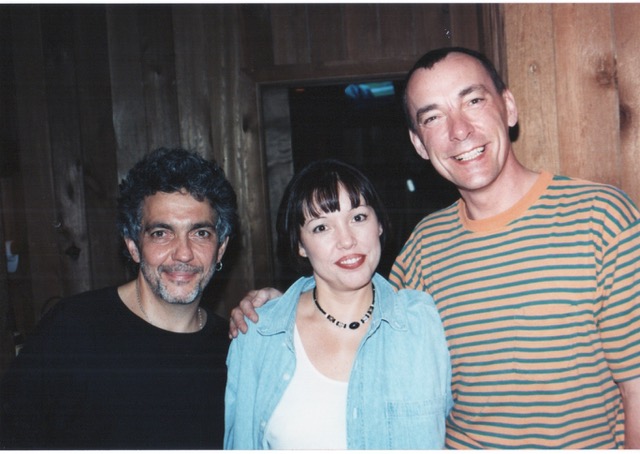
What can I say about my friend Neil. We met after someone challenged me that I would NEVER get him to do one of my Buddy Rich Memorial concerts. He had NEVER done anything outside of Rush. Not one to back off from a challenge, I wrote him a letter. A week later I received his answer, obviously the rest is history. I won the challenge.I think we were such good friends because I wasn’t a Rush fan. When we met, I couldn’t name one Rush song. Something I teased him with constantly. He enjoyed it.
I can’t think think of a time when we weren’t laughing about something stupid or making fun of everything. I like to think I brought out his silly side. For someone perceived as “the professor” and a very serious person…the Neil I knew was exactly the opposite. Goofy, funny, charming, and shy. We spent a lot of time together professionally and personally.
When he told me three years ago that he was suffering from the same thing that took my father, I was dumbstruck. We sat and talked about it for a long time, I think he felt safe telling me because I had been through it with my dad. It doesn’t take the shock of his passing away to have known it was coming. You always pray for the miracle.
Neil, my dear friend, I will miss your laugh, your crazy letters, you never forgetting my birthday, watching the Blair Witch Project in my living room huddled on the couch screaming, and our philosophical conversations. You were more than a friend to me and I will miss you forever.
Cathy Rich
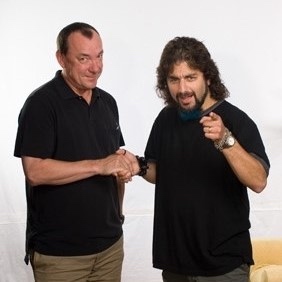
Neil Peart’s passing is a colossal loss for the drumming community. Possibly only paralleled to Buddy Rich or John Bonham’s deaths. But it has transcended beyond just the Drum community…the outpouring of love and tributes since his passing prove his impact on the world beyond just us drummers.I’ve often said: there are no such thing as ‘best or greatest’, there’s only ‘favorites’… You know what, there is one exception: Pound For Pound, Era For Era, Neil Peart was the G.O.A.T.
Thank you Bubba…we will all miss you dearly
Mike Portnoy
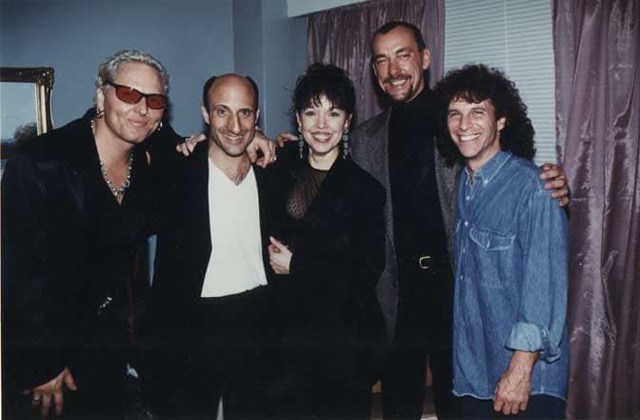
Neil Peart was a Renaissance man. Most of us know him as the iconic drummer and lyricist of Rush. But beyond his exceptional talents in the world of music, Neil’s zest for life, thirst for knowledge, and quest for adventure led him down many divergent paths.I had the honor and pleasure of meeting Neil in 1985, when The Steve Morse Band toured with Rush as their opening act on the band’s Power Windows Tour. Most touring musicians will attest to the absolute joy and excitement of bringing their music to audiences around the globe. Most of these same musicians will also agree on the physical and emotional toll that endless touring can take on a human being.
That said, a typical show day often consists of travel, sound checks, meet and greets, interviews, the performance, followed by more meet and greets. Well, as if this is not enough, a typical show day for Neil Peart on Rush’s ‘85/’86 ‘Power Windows Tour’ would usually begin in the wee hours of morning, as Neil would journey on his bicycle from the previous city (assuming said previous city was within 150 miles of the next gig). Neil would often be on his bike for hours, arriving in time for Rush’s sound check. Directly after sound check, he would have dinner, which was immediately followed by a one-hour conversational French language lesson with a local French-speaking tutor. Upon completing his French lesson, Neil would proceed to a private practice room and warm-up on a small drum kit prior to the band’s two-hour concert. After the concert, Neil would usually hang for a short time before excusing himself to go to the band’s tour bus, to work on one of his future literary creations.
Sometime during this same time period, when he had some time off from touring, Neil flew to China, where he met up with a handful of bicycling enthusiasts for a 3-week journey through remote parts of the country. With pad and pen in hand (at the time, Neil felt that a camera interfered with the creative process) he would jot down highlights of the day’s experiences, which eventually culminated in one of his first literary works entitled, ‘Riding The Golden Lion’. In addition to the writing portion of this 39-page journal/book, Neil was involved in every step of the process in putting the book together, including choosing the cover art, font, page color and thickness, etc. I believe it was the first outing in what would become a passion of his, eventually authoring several critically acclaimed books.
On the very last day off of The Steve Morse Band’s final leg of the Rush Power Windows Tour Neil, Alex, and Geddy took our band to an exotic restaurant for a memorable band dinner. Sitting cross-legged on pillows on the floor, in our very own private room, sans silverware, we dined on an incredible feast of delicacies using only our fingers. Alex, a wine expert and connoisseur, made sure the nectar of the Gods was flowing. So, there I am sitting next to Neil, chit-chatting while trying to think of something interesting and stimulating to say to this sophisticated, worldly, well-traveled man. Neil beat me to the punch, turning to me and posing the question, ‘So Rod, have you ever considered the effects of climate on the development of Western Civilization?’
That, in a nutshell, sums up the ever-inquisitive Neil Peart, always seeking knowledge and new experiences, never happy with the status quo. He is the textbook definition of ‘Carpe Diem’, seizing every moment of life to engage in something of importance, be it music, reading, writing, philosophizing, bicycling, motorcycling, sailing, cross-country skiing, trekking through foreign lands, climbing the highest peaks, and devoting himself to family. He is a truly inspiring human being, whose breath of humanity has touched millions around the world.
I am forever grateful to have known this unique and special man.
RIP Neil.
Rod Morgenstein
In time, I suppose I will come to accept living in a world without Neil Peart, but right now it’s pretty difficult. Neil was my hero, and it is one of the most profound blessings of my life to have been able to meet, work with, and befriend him.
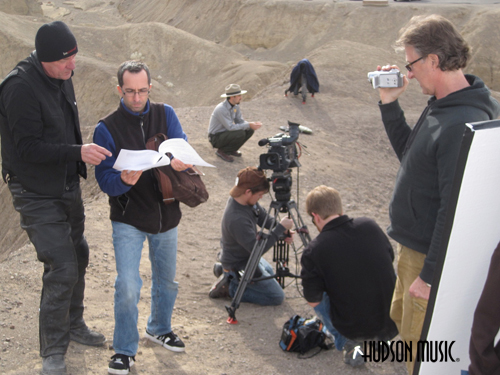
Unlike most of the rest of the world, his death did not come as a surprise to me, although that has not made losing him any easier. Everyone knows he was a fiercely private man, and he remained that way to the end. His illness was personal, and not something he wanted shared with the public. Those he trusted had to respect his wishes—and of all the gifts Neil has given me (and there have been many), his trust was the last to come, and the one I treasured the most.
Truth be told, my heart has been breaking for him for some time now. I was fortunate enough to be with him several times after he got sick, usually when I would fly to L.A. for a gig or some other business. I would always ask if he wanted to have lunch, and he’d just about always say yes. A trip to the Hallowed Bubba Cave was always the highlight of any trip I’d make to his adopted hometown. By the time of his illness, Neil had almost split into two entities in my consciousness. One was the superhero on the poster I used to stare at while I played along to his records. The other was my friend, the guy I knew, who was now facing another nightmare. My friend is a man who had been on the mountain and experienced highs that very few of us will ever know, but was also forced to endure the very darkest valleys of life. It’s hard for me to make sense of it.
The last time I saw him was early last year. I tried to visit again, but near the end his circle had tightened to only the people who were very closest to him. I got to see what loyalty, devotion, and love in friendship personified looks like, in Chris Stankee, who was like a brother to Neil and who thankfully kept me informed when I could no longer see Neil himself. The last time I left the Cave, when Neil walked me to the car and gave me a big, tight hug as we said goodbye, will remain frozen in my memory.
***
When I was thirteen, I turned on the radio and heard “Subdivisions.” From that moment, I knew that I wanted to play drums, and soon my dream was to devote my life to drumming. Neil Peart stood astride my life like a colossus then. I played along to Rush every single day, and eventually found a guitar player, my late friend Paul Badalamenti, and we would jam to Rush for hours on end. It wasn’t just his drumming technique; the music spoke to me, and I admired Neil’s intelligence, work ethic, creativity, eloquence, and seeming determination to remain a “regular guy,” and I pored over every drum part, lyric, liner note, album cover, tour book, Modern Drummer interview, and drumset diagram until I knew them better than my own name. In time I even joined a Rush tribute band and played in it for over ten years.
I’ve been pretty lucky over the years to have met just about all my favorite living drummers, but I never expected to meet Neil—nor was I sure I’d want to, given that I pretty much figured he’d be turned off by what he later called (in the book Far and Near) my “frighteningly detailed knowledge of (his) work” (I just love that!). It is Rob Wallis and Paul Siegel that I have to thank for introducing me to Neil, after I had worked as editor for Hudson Music for the first few years. It was Rob that accompanied me to my first (and many subsequent) meetings with Neil, until Neil decided it was safe, and that I wasn’t going to bear-hug his leg and not let go. We made a DVD, and then Neil indulged my desire to write a book (Taking Center Stage) that is, in essence, my love letter to his work with Rush. It was a dream come true.
Since that book is already written, I guess I’ll not write another one here. There are so many great stories and memories of visits with Neil, Rush concerts, and work on our projects. I am shattered by his loss. But joy remains. He allowed me to bring my son Nicholas to meet him, and Nicholas is one of yet another generation of drummers to be influenced by Neil—who I would wager probably inspired the largest number of young people to pick up sticks, with the possible exception of Ringo Starr. Certainly for my generation, he stands alone. He is the reason I play drums, and has given me a lifetime of inspiration. If you had told my thirteen-year old self how this all would have worked out, I would have never believed it.
The staggering outpouring of grief over Neil’s death from friends, peers, and fans has truly moved me. Of the many Rush lyrics floating around my head lately, the one that stands out is this one, from the song “Bravado”:
And if the music stops
There’s only the sound of the rain
All the hope and glory
All the sacrifice in vain
If love remains
Though everything is lost
We will pay the price
But we will not count the cost
The music may have stopped, but nothing that Neil left behind was in vain. He filled up this world with music, inspiration, and poetry that will continue to move people for years to come. His legacy, to me, is as the greatest rock drummer of all time. And most importantly, a lot of love remains. A whole lot.
I will always miss him, and will be forever grateful that both the hero and the friend were part of my life.
Joe Bergamini
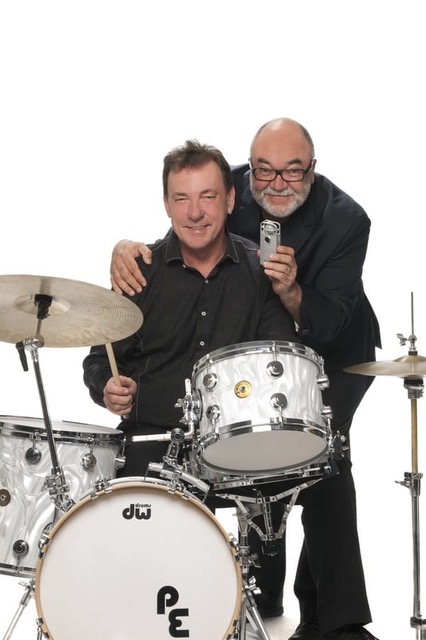
It’s a common enough thing to do…when time or circumstance brings a friend or loved one to mind, we search for a tangible element of memory. This was always in the form of a scrapbook, a photo album or even a shoebox filled with letters. Of course, nowadays, it’s the searchable database of an email program that can bring past digital conversations to life. That “life” word is very important.And so it was after I received the news of Neil Peart’s passing, I needed to touch something of him. I could watch some YouTube videos, but any of those performances were not at the core of our relationship (even though some of our work together did manifest itself in his later playing, at least, according to Neil). Tributes galore from all manner of drummers, but, again, that was not the basis for our friendship or ensuing correspondences. Reading the back and forth of our letters, I’m surprised now by how collegial and even intimate our written talks turned out to be. This was due to a couple of factors…
First, Neil was an incredible writer of words. Each letter is as carefully constructed as one of his drum solos, and he enjoyed an ability to be as prolific as he was varied in his voice on paper. To put it more simply: his letters are an incredible if bittersweet pleasure to read again. The comparison that comes to mind is a warm and inviting bath. The man knew how to turn a phrase. And he was always a perfect gentleman in his prose, spontaneous or otherwise.
As tempting as it is to share some of his missives with the world at large, that would betray his confidence in me. I’ll just leave it at: the man could write.
Second, he surrendered much more of himself than I expected him to. I’ve taught other rock drummers who were coming to me with the vague reason or expectation that learning a wee bit of jazz would somehow automatically “up” their game in no time. They were usually disappointed to discover that these things TAKE time. Neil had no such illusions. An instructive allegory can be found in his love of motorcycle riding and his appreciation for the journey. He found meaning and joy in the process and in the work. And this guy wasn’t just a rock star. He was THE drumming rock star.
Meanwhile, I had never even listened yet to a single song by Rush when we met for the first of several lessons at my home. (Since Neil spoke openly about our work together, I can follow suit.) He was an ideal student of the instrument. And, in that sense alone, he was very much like his idol Gene Krupa, who sought out instruction from other drummers and percussionists while at the height of his own fame and glory. Neil paid attention and did his homework. He seemed to delight in keeping me apprised and abreast of his steady stream of improvement and epiphanies. One of his goals was to improvise more. My first job as his teacher was to provide some practical mechanical and musical advice. My second job was to encourage the fire that was already lit under his motorcycle seat. Teacher’s delight: he ran far and wide with the ball, to mix metaphors. To be honest, I only showed him a couple of things. But I suspect that the dynamic of the mentor/student relationship was something he intuited that he needed at that moment. He was ready to get to his next level, I just helped him to find the button on that elevator.
Of course, because I was not a fanboy, he could trust me completely. I know he took delight in giving me my first Rush album and was quite happy when I told him how much I liked it. His drumming really impressed me. Duh. I just got done saying that he was the Gene Krupa of our time. Allow me to explain…
It was only with time that I was able to fully appreciate what Gene Krupa did for drumming and for jazz. Gene was no Chick Webb, no Baby Dodds, no Sid Catlett, no Papa Jo Jones and no Buddy Rich. I mean, he was no Art Blakey either (when I was real young, I was crazy about Art Blakey and Max Roach). But Gene Krupa was, in some respect, greater than the sum of all of their parts. Gene Krupa made the drums so popular that it was as if he had INVENTED drumming. For most folks, Gene Krupa WAS the drums. Yet, Gene Krupa was innately modest despite his abilities as a drummer and performer. His persona at the kit, while it scored a bullseye with most non-drummers, belied how seriously-well he played. Neil may have enjoyed or suffered that same misconception on the part of some drummers. Several million Neil Peart fans can’t be wrong, however. I never got it until I got it.
As far as I could tell, Neil never considered himself anything other than a student of the instrument, plus a guy who went on the road to do his job even if that meant leaving his wife and daughter at home for extended periods of time. But I am fully-prepared to join the chorus of fans who love Neil Peart…I just came to love him ultimately for different reasons.
Two key words: his humility and his humanity.
Like his original idol Gene Krupa, Neil Peart changed the world of drumming forever, and we should all mourn this loss as well as celebrate all of the joy that his percussive journeys brought us. I think he would prefer the “joy” part. He reveled on the road less traveled, and he delivered wherever he went. I’m grateful that we kept in touch for some of this time and that I have his letters to hold and cherish. I’ll be printing them out later today to read by the fire.
Peter Erskine, January 11, 2020
I imagine my experience is similar to many other drummers around the world – I spent my formative years learning every beat and fill on 2112, Hemispheres, Permanent Waves, and of course, Moving Pictures (among others) – note for note. I transcribed solos and memorized the minute differences between studio and live records, and I challenged myself to play those songs along with Neil as close to perfect as possible, over and over again (my poor mother…). My friends and I would gather together to compare our transcriptions, do our best to hack our way through “La Villa Strangiato” or the drum solo in “YYZ” from Exit: Stage Left, and spend countless hours dissecting and discussing what seemed like an endless array of incredible performances by Neil.
For me, his playing was a gateway to more adventurous music and my own compositions, but the impression Neil Peart, his drumming, and his meticulous preparations made on me, lasts a lifetime.
A quote I read just after his passing sums it up succinctly: “This man is your favorite drummer’s FAVORITE DRUMMER”. I can’t think of a better way to sum up his influence on so many…
Michael Hoff
Designer & Developer – Hudson Music


It is hard for me to put into words JUST how much Neil Peart meant to me as a player, and influence, a writer, and lastly and finally, a friend, so I’m going to try to keep this short. I became a certified RUSH freak in 1983 at the ripe age of 13, saw them live for the first time in 1984, and EVERY tour since, sometimes multiple times (thanks Neil and Lorne) until they retired in 2015. My first contact with him was back in 1985 when I wrote to him through Modern Drummer and received a post card back with his “Big Red” kit on the front. Neil was gracious enough to answer my naive questions like “how do you get your bass drums to sound so good” – hey I was 15), filled the post card as much as possible and signed it – 100% GOLD!!!!Many years later through my friends at Hudson Music I was able to meet him and eventually become friends. We shared a lot in common at the time –like our producer Nick Rasquienez who was doing my album at the same time he was flying to Toronto to work on demos for Vapor Trails with Rush. One day he happens to say to me – “hey I played Neil some Shadows Fall last night” – of course I thought he was pulling my leg and went “oh yeah”, and he goes “yeah, Neil said he really liked what he heard.” To this day I still think he was pulling my leg……LOL
The last time I sat down with Neil we were in his dressing room discussing his latest book Road Show and oddly enough discussing one of my other lost friends, Darrell Abbott from Pantera who was shot on stage a day after my band ended a tour with them. Neil never knew the connection or the closeness I had to that situation (even though he wrote about the incident itself in this book), and I think he knew that it was difficult for me to talk about that, so he quickly changed the subject, but I think it showed both of us right then and there just how precious life is and we have to enjoy every moment that we can. When my wife and I left his dressing room that night I went to shake his hand and thank him, yet again, for all the hospitality, and he pulled me in for the hug – that’s how I want to remember my hero.
So thank you Bubba for everything – and special thanks to Rob Wallis, Paul Siegel, and Joe Bergamini, and Hudson Music because without them – I would not be telling this story.
Jason Bittner
It’s very difficult to express the exact emotion I felt the day I met the band and played that first rehearsal for the Clockwork Angels tour…. (Needless to say, they were ALL so welcoming…from the crew, to the staff to the gentlemen themselves) But as a lifelong fan, steps away from my heroes, and only a few feet away from arguably the most influential rock drummer of all time, I hid my tears to appear professional, even though the feeling was overwhelming.
I already knew so much about them, about HIM…I was proud to be fully knowledgeable of the discography, the subtleties I could read about in rock magazines that allowed a kid like me at that time to feel like I was “inside the head” of this band, and the mystery of this amazing drummer.
It is well documented how innately shy Neil was, but contrarily, once he knew and trusted you he talked and shared almost incessantly, which i found to be deeply endearing. Yet, as a fan, and now supposed colleague (no way!) i found myself in that incredible quandary: “Do i walk away now? How about now? Oh my god, he’s still talking to me!? Now he’s laughing. My god, he’s showing me pictures now… holy shit!!
It’s Neil Peart!!! Ok…..get over yourself and enjoy this!”
Which I did, and now savor the incredible memories of our times together. The sadness for me is not necessarily tied to loss (although I feel close to him and the band, it certainly isn’t based on a long personal history, but much more like the loss that most of his fans feel), it’s more the notion that today’s world perhaps is no longer able to support and cultivate an artist with that lifelong level of commitment, unwavering consistency, jaw-dropping accuracy, unstoppable momentum, and deeply heartfelt love…both for his craft and the way he led his life.
Being an artist is mostly a sacrifice, it’s a vow. To me, Neil is one of those artists that personifies the ability to care ONLY about the craft, and simultaneously, not by choice, change lives.
Jonathan Dinklage
(Violinist, Hamilton Broadway company, performed on Clockwork Angels Tour)
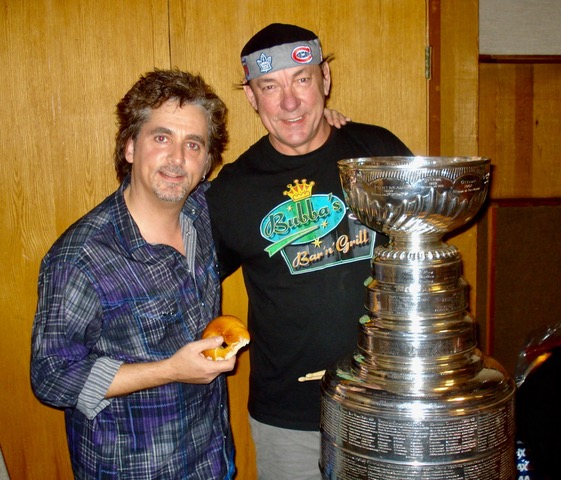
I only met Neil Peart once, but it was a lovely meeting indeed. I had flown to LA to work on Brian Wilson’s Gershwin record in December 2009 and while I was at the hotel the night before the sessions began, I received an email and photo from Jimmy Johnson (our long time guitar tech, and Neil’s long time friend and Rush crew member). Jimmy said, “Neil just sent me this picture of his hockey drum kit. He’s recording the Canadian Hockey Night Theme with it in LA tomorrow.”When I walked into Ocean Way Studios the next morning, Sabian cymbal artist rep, Chris Stankee, was in the lobby. I gave him a hug and asked him what he was doing there and he said was looking after Neil. He suggested we should say hi to him now as they were about to get to work in the studio next to the one where I would be working, so I dropped off my cymbals and grabbed a bagel (I was hungry) and off we went to the next studio over from Brian’s.
There was the hockey kit, the actual Stanley Cup, a full big band and an entire film crew. We shook hands and chatted, I congratulated him on his new young daughter, and as I remember— he was the one that was asking me all the questions. He wanted to know about working with Brian Wilson, what that was like, etc. We brought up many mutual friends (Lawrence Gowan, Jimmy Johnson) and as we were chatting, I noticed the whole room was ready and waiting for us (me) to stop talking so they could all get to work. I said to Neil, “Well, looks like I should be on my way and let you all get to business!” Chris then snapped a photo of us (bagel still in hand) and off I went. He was incredibly warm, personable, curious, and felt we could have kept the conversation going had it not been for 30 people waiting to get to work.
He had his own voice on the instrument but even more, he had his own literary voice. Lyrically unique, and he lived through such unimaginable tragedy and ultimately came out the other side to continue his life passionately.
In particular 2112 through Signals loomed large in my childhood. I learned every single note of Moving Pictures when I was in 6th grade. That record still can catapult me back to those days. I was truly grateful to have a few quality minutes with the man. I wish there had been more. Every story I ever heard about the guys in Rush, and I’ve heard a lot, all really portrays them as wonderful, exemplary human beings. My condolences to Neil’s family, musical family, road family, and his friends. RIP.
Todd Sucherman
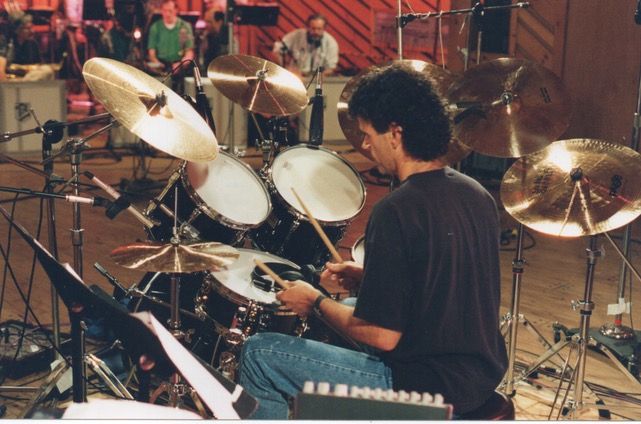
In 1994, I was invited by Cathy Rich to participate in a recording project honoring her father, Buddy Rich. These were the Burning For Buddy sessions and featured drummers of all styles interpreting Buddy’s music in their own way.Neil was the producer on this historic recording and I impressed that he was completely prepared to manage all the different personalities and styles to make it all work with Buddy’s music. He had done his homework and knew the music well.
In a corner of the studio, his drums were set up and each day he would practice for when it was his turn to record. We had never met before but were aware of each other’s work.
He was very kind, encouraging and supportive. This was an
experience that I’ll never forget.
Neil was a giant among us and left a body of work that will be studied for generations to come. RIP Brother.
David Garibaldi
Neil Peart.
What can I say…As a person Neil was a really nice guy. The times we hung out he was alway so polite and quiet. But struck up very interesting conversations about drumming. One time I talked to him about some of the nice things he said in a couple of interviews about me he was so humble and just said something like “thanks no problem it’s all true”… so nice.
As a player he rocked with Rush. One of my favorite tracks was Tom Sawyer. He seemed so relaxed at at home going in and out of the 7/8 time back to 4/4 while playing fast melodic drum fills. It was awesome with a drum sound that you’d be able to hear each note he played.
And he has done this live as well. We will keep on hearing his drums and lyrics on every classic rock station for years to come and well deserved. Gold bless.
My fellow drummer, RIP. He WILL be missed.
Amen.
Carmine Appice
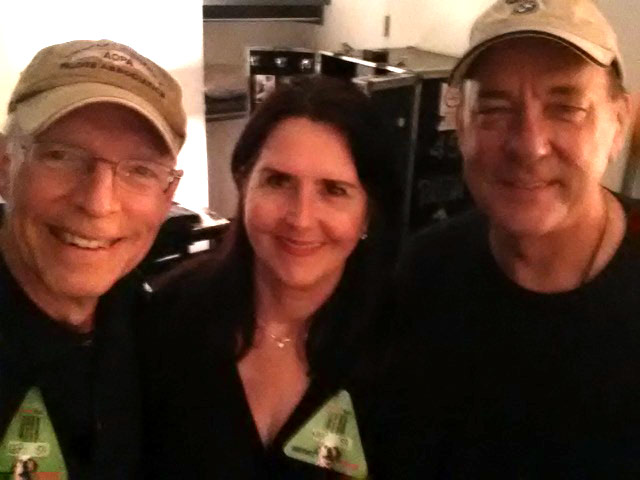
Neil Peart loomed large in my life for nearly 30 years. He was a constant presence, spiritually and otherwise, on an almost daily basis during my tenure at Pro-Mark. I had the opportunity to get to know him and and visit with him many times over the years. While I can’t say we were ‘buddies’, we certainly had a very friendly relationship and shared some very deep philosophical conversations.When my 1st wife died, Neil was one of the first with condolences, since he knew exactly what I was going through. When I introduced my now-wife to him during their last trip through Houston, he told me how happy he was for me because, again, he understood.
I first met Neil face to face in the late 80s. I’d been Director of Artist Relations for 4-5 years at that point and, honestly, when I joined the company, I really didn’t know anything about Rush or Neil. As I recall, a band called Triumph was doing pretty well at the time and I thought Rush was just another power trio. Then, I saw them live and I ‘got it’! They kicked some serious ass and looked like they were having fun doing it.
As the years passed, we had many more encounters and, each time, he seemed more relaxed around me…perhaps because it was a ‘business’ relationship, but maybe it was because I made a point never to talk about the business of music. But, we DID talk about music. At some point, I mentioned that my mom was a trained operatic soprano, and that launched a conversation about the merits of German Opera vs Italian Opera. The man was DEEP!.
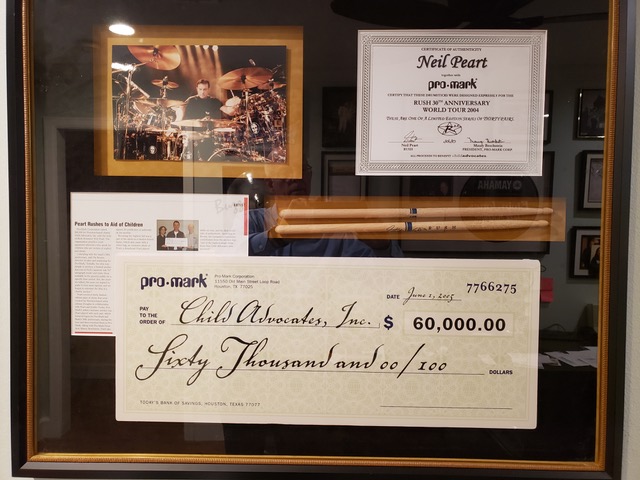
My fondest memory, however, is the promotion we did with him to celebrate the band’s 30th Anniversary. We made 30 pairs of a specially-imprinted 747…his weapon of choice…and sent them to him. He played with all 30 pairs and returned them to us. We auctioned off the sticks and raised $60,000.00 for Child Advocates. The top bidder paid $5000.00, yes, $5000.00 for a single pair of sticks. For that, we shadow boxed them and threw in a show-used drumhead for good measure. Of all the promotions and other stunts we pulled during my tenure at Pro-Mark, this is the one of which I am most proud, and yes, I have a pair of those sticks framed and hanging on my wall. Treasured possessions to be sure.Kevin Radomski who, at the time, was our Director of Artist Relations, and I flew to LA with a giant replica of a $60,000.00 check. Neil brought Carrie to take some pictures which we did at a local hotel. After the shoot, we dined at the hotel restaurant and had a delightful time. He had a wonderfully goofy Canadian sense of humor and we a laughed a lot. At the end, he gave me is address, cell number, and email. Wow, that was cool!
Among the pictures I’ve included is the first photo with him. Maury Brochstein, the president of Pro-Mark was with me. The other is the last picture I have of us together. It was a selfie taken during what would be their final show in Houston. My wife and I spent an hour or so in his dressing room talking about his daughter, Olivia, looking a family pictures and pictures of his latest road trip. And, my wife, who had absolutely NO idea she was in the presence of ‘royalty’ was completely charmed. It makes me smile to think about that moment. I never dreamed it would be the last time I’d see him.
There are far too many more memories to recount here but, suffice it to say, he was a kind, decent, principled, intelligent, witty and unbelievably talented gentleman. The world is a better place because he was in it. He left us far, far too early. RIP, Neil.
Pat Brown
Former Director of Sales and Marketing – Promark Drumsticks
As a child, I spent hours listening to Rush albums. I learned about composition, arranging, odd time signatures and rudiments, not realizing this would later be the foundation of my career as a drummer. Neil’s lyrics brilliantly guided the melodies that told the stories that became the soundtrack of my youth. I was blessed to see Rush play live several times as a teenager and as an adult, and every time it was better than the last.
In 2009, I was playing a show on Broadway called In the Heights. I received a call informing me that Neil was in the audience. I will never be able to explain the feelings I had. I later read Neil’s blog where he described his experience. I couldn’t believe how lucky I was. I’ve long known about Neil’s need for privacy. It was easy for me to understand shyness in that capacity, as I too share those feelings. Neil sent me two incredibly thoughtful gifts by way of our dear mutual friend. I will have them for the rest of my life.
This past week has been another reminder of how important humility, humanity and integrity are.
Neil Peart continued to challenge himself as a musician and that inspires me to continue working on being better, not only as a musician but as a human being.
The treasure of a life is a measure of love and respect
The way you live, the gifts that you give
In the fullness of time
It’s the only return that you expect
The future disappears into memory
With only a moment between
Forever dwells in that moment
Hope is what remains to be seen
(from “The Garden,” lyrics by Neil Peart)
Andrés Forero
The loss of Neil Peart is devastating on two levels. First, of course, to the entire drumming community. As Jimmy Chamberlin recently commented, “A piece of Neil lives in nearly every contemporary drum part in rock— whether people realize it or not.”
Secondly, on a personal level. Before every tour Neil would block out the Drum Channel studio for a full month to practice before Rush rehearsals even started. One big lesson I definitely learned from Neil is always be prepared.
While he was at DC we would have lunch every day in my office and he would always want to know what other drummers might be coming in to visit. It was always amazing to me that he was just as excited to meet his drumming idols as they were to meet him.
There are so many great memories. I once bought a light at Restoration Hardware because I thought the wing screw design would be perfect for the Time Machine set— and Neil agreed.
When he liked something he would just light up. If he thought something was not quite right, he would never say he didn’t like it. He would just say, “Let’s try something different.”
Neil cared greatly about education for drummers and the importance of having a private teacher. He told me he almost quit drumming at one point but his teacher encouraged him to keep going.
There is a lot that we can learn from Neil as a person and a drummer. We will do our best to continue our mission… as he wanted it.
Don Lombardi
Drum Channel
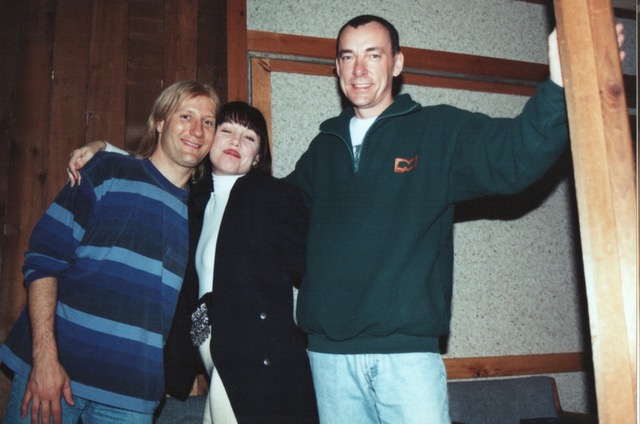
Neil was a good friend and he changed the world of drumming forever…What an amazing drummer and game changer.We used to play double drums at my house, and I remember asking him one day..”What do you feel like jammin’ on today?” He replied, “Can we just focus on playing in 3/4?” So, we played tunes that were jazz waltzes in all the tempos we could think of…and we traded and had a blast expanding vocabulary in 3/4. He was always wanting to push himself and further his knowledge…he had such a strong passion for playing drums.
Even though he had never met my Dad, Bud Bissonette, Neil showed up at my Dad’s memorial service because he knew we had such a close Father/Son relationship. That always meant the world to me. That’s the kind of guy Neil was…Neil was a wonderful human 🙂
Gregg Bissonette
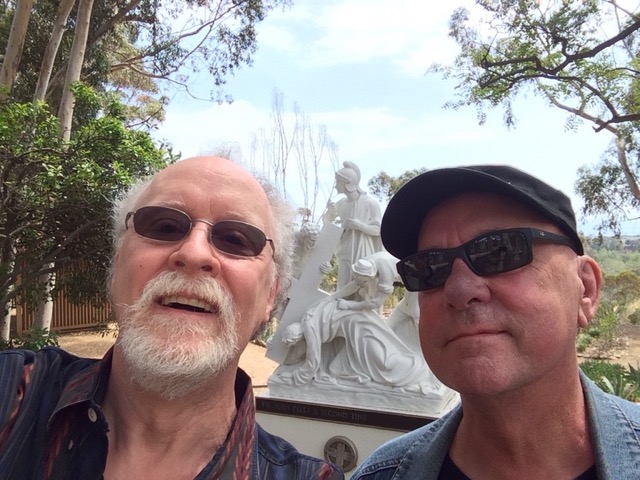
I want to thank all the people who have so kindly written, texted, posted or called regarding Neil’s passing. Like so many, this has completely undone me and I haven’t quite known where to start. I am working on something more substantial to be posted in the future when things have settled a little for everyone.During the last three and a half years, Neil faced this brutal, aggressive brain cancer bravely, philosophically and with his customary humor, sometimes light and occasionally dark – all very characteristic of him, even given the serious situation and the odds handed to him at the time of the diagnosis and subsequent surgery. But he fought it. By his own request for privacy, few people knew, but his understandable response to this news in no way excludes or diminishes ALL of those who also knew him, worked with him or loved and admired him from up close, or at a distance. His tenacious approach to life served him well during these last years and although he primarily kept his own counsel, he retained his dignity, compassion, understanding and his deeply inquisitive nature, which never deserted him. Remarkably, considering the severity of his condition (glioblastoma) and through the resulting aftermath, he really had no pain. This was always my first question when I saw him.
“Any pain?” I asked. “No pain”, came the reply.
What a blessing that was. We were all grateful for that.
For every one of us who loved him, near and far, this is a loss that is difficult and impossible to summarize in a few short paragraphs. The outpouring of love, respect and appreciation from every imaginable quarter for this extraordinary, singular talent and beautiful man with a mind like no one I have ever met, is touching beyond words. To those that had to guard and hold on to this information closely for three and a half years, for obvious and protective reasons; his wife Carrie, daughter Olivia, his loving family, band, colleagues and friends, they have my undying admiration. You know who you are.
Apart from his deeply gifted, genius talent and prolific output, which he brilliantly displayed through music, lyric and prose writing and that staggering storehouse of knowledge across an array of subjects in multiple fields, he remained a kind, gentle, considerate and modest soul and a consummate gentleman… as well as an extraordinary friend. If you were his friend, you knew it and he understood how to be the best friend that you could ever hope to have. I think I speak for all, known and unknown to him, to say he will be deeply missed, eternally loved, appreciated and remembered for his many invaluable contributions to music, art and the written word. That will be forever celebrated.
Despite what he knew and we knew which was inevitable, I believe there is some sense of relief that this long, difficult odyssey has finally ended.
Thank you my dear friend, for passing this way. We are all richer for your presence and light in our lives.
Doane Perry
Jan 16, 2020
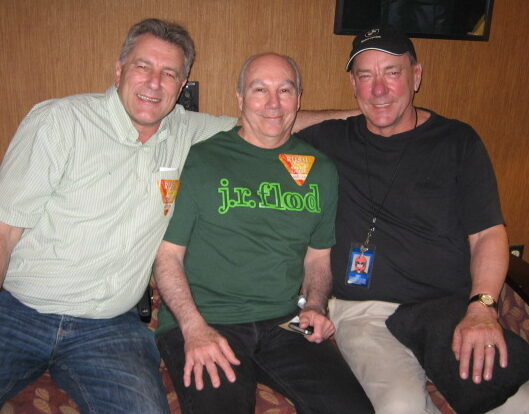
Woodstock was a year behind us. As teenage musicians growing up in Canada, all we wanted was to play music, listen to music and go to a store called Sam The Record Man to get more music.My band, Titanic and my friend Paul Dickinson’s Band J. R. Flood played gigs throughout Southern Ontario in teenage nightclubs and at high school dances. Paul called me up one day and asked if I would come and rehearse with their band to keep their “chops up“ as their bass player was on holiday for a while. An offer to play more music? You didn’t have to twist my arm.
When I arrived at rehearsal, I set up my bass rig to the left of Neil and noticed a 16” crash cymbal set up behind and above his left shoulder. During the tunes, I had to be mindful of the drumstick whizzing by my head each time that cymbal was whacked.
We played and played until we were musically spent and we called it a night. When I arrived home that evening, my dad told me to go look in the mirror. There were countless small wood chips in my shoulder length hair that had been jettisoned from Neil’s drumstick as he relentlessly punished that 16” crash cymbal!
A very odd and unconventional cymbal and drum kit setup.
A playing style that could only be described as chaotic and reckless abandon.
Every note…….Perfect, Eh?
It is said that you “play” the drums and that you don’t “work” the drums. Paul and I are convinced that Neil did both!
Greg Ouzunoff
1/24/20
Sign up for the Hudson Music email list for the latest info on new releases, sales and exclusive offers.
Sign up for the Hudson Music email list for the latest info on new releases, sales and exclusive offers.
